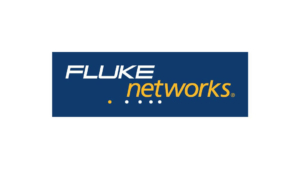What is Fiber Optic Cabling?
Fiber Optic cabling is the transmission of data through thin glass rods over long distances. Some of the advantages of fiber over traditional copper is its ability to transmit higher data and over much greater distances. Fiber Optic cabling is the back bone for IT networks due to its lightning fast transmission of data. Meanwhile, Copper cabling works in conjunction with the Fiber to connect individual devices back to the IT network.
What is Fiber Optic Cable Composed of?
Fiber Optic cabling comes in three layers: outer coating, inner cladding, and the glass core. The outer coating is to protect the fiber from the environment like moisture or other damage. The inner cladding plays an important role in reflecting the light back into the core to reduce the loss of data. The innermost glass core is the media in which the light is transmitting through and connects the light source to the receiver.
Are There Different Types of Fiber Optic Cable?
There are two main types of Fiber Optic cabling:
- Single Mode
- Multimode
The main differences between the two different types of fiber is the mode of light transportation and the size of the glass core. Multimode is better used in shorter distances and is often times cheaper. Single mode is more expensive but offers higher performance over a longer distance. If you’re unsure which type of fiber optic cabling suits your needs more give us a call and we’ll be happy to help come to a solution.
Fusion Splicing
Fusion splicing is the process of fusing or welding two fibers together usually by an electric arc. Here at CSC we use some of the latest fusion splicing techniques to ensure the least amount of data loss. We’ve found that Fusion splicing is both cheaper and performs better than mechanical splicing methods. All CSC technicians are trained to use a fusion splicer as well as to troubleshoot fiber to guarantee the fiber is terminated correctly. Mechanical splicing doesn’t fuse the fiber into a continuous piece but instead uses an alignment device and index matching gel to hold two fibers together at the cost of performance.
Quality Service for Your Business Network Cabling
Our technicians are trained to install new fiber optic cabling that meet and exceed industry standards and are able to trouble shoot existing fiber. All cable installed is tested to ensure that the fiber meets all industry standards. Over the years CSC has installed and terminated Fiber Optics in all different fields from:
- Offices and Small Businesses
- Public and Private Schools
- Government Facilities
- Hospitals and Medical Facilities
- Agriculture
We strive to provide you with the highest quality service, and we guarantee our work. Our network cabling services will get your system up and running smoothly in no time, and includes:
- Professional Cabling System Design and Installation
- Cabling Maintenance and Repairs
- Free Telephone Tech Support
- 24/7 Emergency Service
Get the most out of your data network. Call 831-476-9294 today.
CSC is proud to serve Santa Cruz, Scotts Valley, Watsonville, Monterey, Salinas, Santa Clara, and San Jose.



